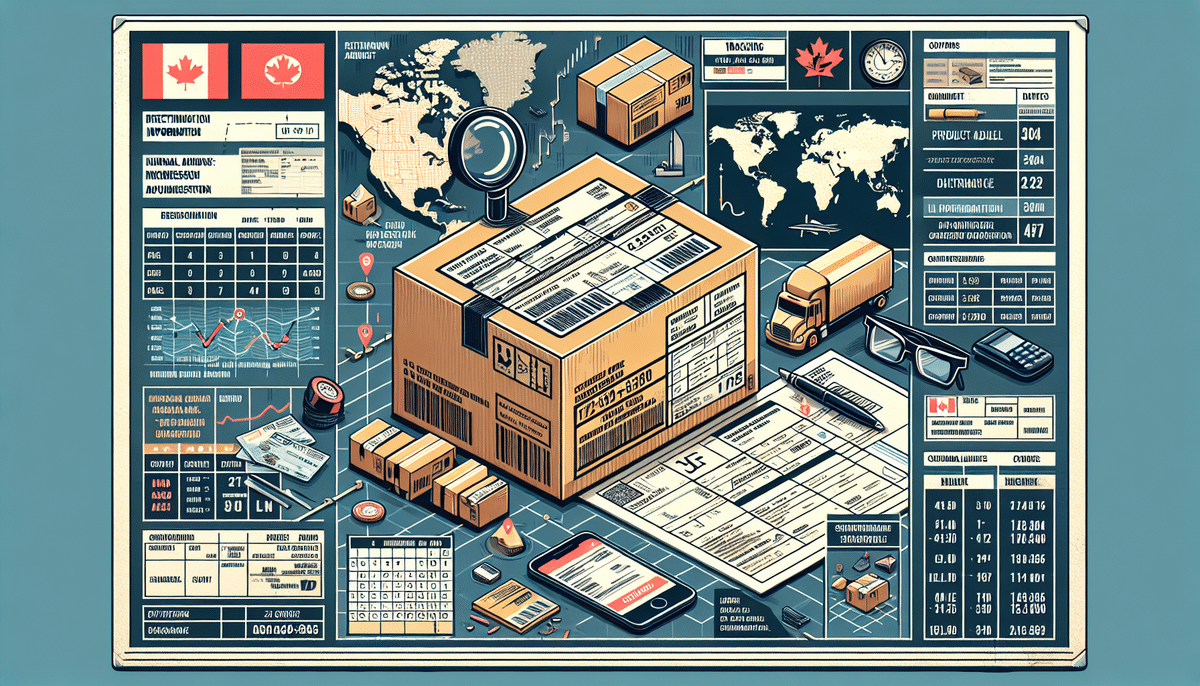Understanding the UPS Chargeback Standard for Shipping to Canada
If your business ships goods to Canada using UPS, comprehending the UPS chargeback standard is essential for maintaining profitability. This article delves into what UPS chargebacks are, their impact on your operations, common reasons for chargebacks, and practical strategies to avoid them. By implementing these best practices, you can enhance your shipping efficiency and reduce unexpected costs. Let’s dive in.
What is a UPS Chargeback and How Does It Impact Shipping to Canada?
A chargeback is a fee that UPS imposes on a shipper when a package is not delivered according to the agreed terms or shipping instructions. Essentially, it occurs when there is a mismatch between the promised service and the actual delivery performance.
UPS chargebacks can significantly affect your business's financial health. These fees can range from a few dollars to several hundred, depending on the package's size and value. Frequent chargebacks may strain your relationship with UPS, potentially leading to increased fees or even the termination of your shipping contract.
When shipping to Canada, chargebacks can also result in delivery delays, which is problematic for cross-border logistics. To prevent chargebacks and ensure seamless shipping to Canada, it's crucial to provide accurate shipping instructions, use appropriate packaging, and maintain open communication with your UPS representative.
According to UPS's 2023 shipping report, businesses experiencing high chargeback rates saw an average increase of 5% in shipping costs annually (UPS Annual Report).
The Difference Between Chargebacks and Disputes in the Shipping Industry
It’s important to distinguish between chargebacks and disputes. A dispute arises when a shipper contests a charge or fee assessed by UPS. In contrast, a chargeback is the fee itself assessed when delivery terms are not met.
Chargebacks can impose a significant financial burden, especially when they occur frequently. Besides the direct fees, chargebacks can lead to lost revenue and tarnish your business reputation. To mitigate chargebacks, ensure that your shipping instructions are precise and communicate any changes to UPS promptly.
Technology plays a vital role in minimizing chargebacks and disputes. Advanced tracking and monitoring systems enable shippers to oversee shipments in real-time, identifying and addressing potential issues before they escalate. Implementing these technologies can provide valuable insights, improving your shipping processes and reducing costs (ShipScience Technology Insights).
Common Reasons for Chargebacks When Shipping to Canada with UPS
Several factors can lead to chargebacks when shipping to Canada with UPS. Some of the most prevalent reasons include:
- Incorrect shipping address or incomplete recipient information
- Package not delivered within the expected timeframe
- Wrong or insufficient documentation for customs clearance
- Package not properly packaged or labeled
- Incorrect or missing product description or value on the commercial invoice
Additional chargebacks may arise from issues related to the shipment's contents, such as prohibited or restricted items. High-value shipments might require extra security measures, leading to potential chargebacks if not properly managed. It is imperative to thoroughly review Canadian shipping regulations and UPS guidelines to prevent these issues.
According to the Canada Border Services Agency, accurate documentation can reduce customs delays by up to 30%, significantly lowering the risk of chargebacks.
How to Avoid Chargebacks When Shipping to Canada with UPS
Implementing the following strategies can help you avoid chargebacks when shipping to Canada with UPS:
- Double-check that all shipping information is accurate and complete
- Ensure that your package is properly packaged and labeled according to UPS standards
- Provide complete and accurate documentation for customs clearance
- Utilize UPS technology to track and monitor your shipments in real-time
- Partner with a reputable third-party logistics (3PL) provider to ensure compliance and enhance shipping efficiency
Additionally, ensuring that your products comply with Canadian regulations—including bilingual labeling and adherence to specific safety or environmental standards—can further reduce the risk of chargebacks.
Clear communication with your customers regarding shipping times and potential delays is also crucial. Providing tracking information and regular updates can manage customer expectations and minimize chargebacks resulting from late deliveries.
The Importance of Accurate Documentation in Preventing Chargebacks
Accurate documentation is paramount in preventing chargebacks when shipping to Canada with UPS. Key documents include the commercial invoice and the Certificate of Origin.
The commercial invoice must detail the products being shipped, their value, country of origin, and the recipient's name and address. Inaccurate or incomplete information can lead to customs delays and subsequent chargebacks.
The Certificate of Origin verifies that the goods were produced in a specific country and is required for certain products. This document can help reduce or eliminate customs duties and taxes, and providing an accurate certificate can prevent chargebacks related to customs issues.
Ensuring the shipping address is complete and correct, including the recipient's phone number, is also essential to avoid delivery delays and potential chargebacks. Verifying all shipping information and documentation meticulously can facilitate a smooth shipping process to Canada with UPS.
For more information on required documentation, refer to the UPS Customs Documentation Guide.
Understanding the Role of Customs Clearance in Avoiding Chargebacks
Customs clearance is a critical component of the shipping process to Canada. Proper understanding and compliance with Canadian customs requirements are essential to prevent delays and chargebacks.
The customs clearance process can take several days, and certain goods may incur additional government fees. Failure to comply with customs regulations can result in substantial penalties and chargebacks.
Accurate classification of goods is a vital aspect of customs clearance. Determining the correct tariff classification for each item can be complex, and incorrect classification can lead to delays and extra fees. Collaborating with a knowledgeable customs broker or shipping provider can help ensure proper classification.
Inspections by Canadian customs officials may occur randomly or if there are concerns about the shipment's contents. Proper labeling and secure packaging are essential to avoid issues during inspections.
Utilizing UPS Customs Brokerage services can streamline the customs clearance process and reduce the risk of chargebacks by ensuring compliance with all necessary regulations.
How Technology Can Help Prevent Chargebacks When Shipping to Canada with UPS
UPS provides a suite of technology tools designed to help businesses prevent chargebacks when shipping to Canada:
- UPS WorldShip: Enables the creation of shipping labels, management of customs documentation, and real-time tracking of shipments (Learn more).
- UPS Customs Brokerage: Assists businesses in navigating the complexities of customs clearance to avoid compliance issues.
- UPS My Choice®: Allows customers to receive delivery alerts, reroute packages, and choose UPS Access Point™ locations, reducing the likelihood of missed deliveries and chargebacks.
- Advanced Packaging Solutions: UPS offers specialized packaging options for fragile or high-value items, helping to prevent damage and loss during transit.
Implementing these technologies can enhance shipment visibility, improve communication with customers, and ensure compliance with shipping regulations, all of which contribute to reducing chargeback risks.
For more information on UPS technology solutions, visit the UPS Technology Services page.
The Impact of Chargebacks on Your Business's Bottom Line
Chargeback fees can significantly impact your business’s profitability. Beyond the direct costs of the fees themselves, excessive chargebacks can lead to additional penalties and jeopardize your relationship with UPS.
To safeguard your bottom line, it is crucial to implement proactive measures to prevent and minimize chargebacks. Clear communication of your return policies, prominently displaying them on your website and receipts, can help manage customer expectations and reduce chargebacks.
Offering incentives for customers to address issues directly with your business before initiating a chargeback can also mitigate the risk. For example, providing discounts or expedited resolutions can encourage customers to resolve disputes without resorting to chargebacks.
According to industry studies, businesses that actively manage and reduce chargebacks can see a decrease in shipping costs by up to 10% annually (Shipping Journal Insights).
Best Practices for Handling and Resolving UPS Chargebacks When Shipping to Canada
Receiving a chargeback notice from UPS requires prompt and strategic action to resolve the issue effectively. Follow these best practices:
- Review the chargeback notice thoroughly to understand the reason for the fee.
- Gather all relevant documentation to support your case, including shipping labels, tracking information, and communication records.
- Respond within the designated timeframe specified in the chargeback notice.
- Collaborate with UPS to resolve the dispute and implement measures to prevent future chargebacks.
Implementing fraud prevention measures, such as verifying billing addresses and CVV codes for transactions, can further minimize the risk of chargebacks. Additionally, maintaining open communication channels with your customers throughout the shipping process—providing tracking information and regular updates—can prevent misunderstandings and disputes that may lead to chargebacks.
Establishing a dedicated team to handle chargebacks can streamline the resolution process and reduce the time and resources required to manage these issues.
Conclusion
Understanding the UPS chargeback standard for shipping to Canada is vital for any business engaged in cross-border logistics. By adhering to best practices for avoiding chargebacks and proactively addressing any issues that arise, businesses can ensure compliance with UPS regulations and maintain a positive working relationship with the shipping provider.
Furthermore, UPS chargeback standards are consistent with many other countries' regulations, underscoring the importance of staying informed about international shipping requirements. Partnering with a specialized third-party logistics (3PL) provider can offer valuable expertise in navigating these complex regulations, enhancing your shipping efficiency, and minimizing the risk of chargebacks.
For more insights on optimizing your international shipping strategies, explore resources from ShipScience.






















